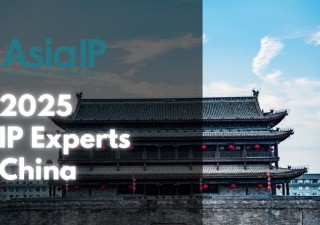A series of China Food and Drug Administration (CFDA) draft orders precede the much-watched State Council Opinions on Deepening Regulatory Reforms to Encourage Drug and Medical Device Innovation issued in October 2017. After the State Council’s August 2015 directive to reform the review and registration process of the pharmaceutical industry, the CFDA had since issued a slew of orders and proposed changes, five of which, as highlighted in a Baker McKenzie brief recently, will have great impact on the medical IP landscape for foreign and local companies alike:
• Decision on Change of Several Issues Regarding the Administration of Imported Drug Registration (March 17, 2017, Draft Decision)
• Relevant Policies to Encourage Innovation and Accelerate Review Process for Drug and Medical Device Market Approval (May 11, 2017, Order 52)
• Relevant Policies to Encourage Innovation and Reform Clinical Trial Management (May 11, 2017, Order 53)
• Relevant Policies to Encourage Innovation and Implement Administration on Life Cycle of Drugs and Medical Devices (May 11, 2017, Order 54); and
• Relevant Policies to Encourage Innovation and Protect Innovators’ Rights (May 12, 2017, Order 55)
Of particular relevance to IP practitioners is the prospect of a patent linkage system for generic drugs, where Order 55 mandates that a generic drug applicant shall notify the CFDA of relevant patents involved in its filing and shall declare to the CFDA that the drug doesn’t infringe the relevant patents, as well as notify the patent holder(s) within 20 days of its filing. The patent owner will have a period of 20 days upon receipt of notification to initiate a patent infringement litigation and notify the CFDA, who is at the discretion to set a waiting period of up to 24 months before approval without suspending technical review during this period.
The order also proposes a more elaborate system of data exclusivity. China currently provides exclusivity protection of six years for drugs that contain new chemical entities. The proposed changes will expand exclusivity periods for orphan drugs and pediatric drugs to 10 years, grant three years in protection for modified new orphan drug and new pediatric drugs, and protect new biological products for 10 years. Moreover, the first successful generic challenger and first imported generic drug that is approved outside of China will be able to enjoy 1.5 years in data exclusivity.
This development is in line with protection measures in the US and as laid out in the Trans-Pacific Partnership, which takes into account for the varying development costs – a major part of which is the design and collection of clinical trial data – in different drugs, while putting in place reward mechanisms for medical areas that enjoy less market incentives. Order 55 sees the Chinese patent regime move in the direction of recognizing data as not a mere supplementary element but a key asset in innovation.
 While David Huang, a partner at LexField Law Offices in Beijing, welcomes the changes, he raises key points of comparison with the US, “one of the most well-known and sophisticated regimes in terms of the pharmaceutical industry.”
While David Huang, a partner at LexField Law Offices in Beijing, welcomes the changes, he raises key points of comparison with the US, “one of the most well-known and sophisticated regimes in terms of the pharmaceutical industry.”
The proposed 20 days for litigation initiation is half of that of the US’s 45 days, Huang points out, citing the unfamiliar legal regime, time and monetary costs, and difficulty in notarized purchasing for a non-marketed drug as major impediments to litigation preparation.
A sufficient amount of time is especially important, he reasons, because the key goal of the linkage system is to facilitate the drug review process and encourage parties to settle disputes, either through litigation or other negotiations, before a new drug has been registered and approved by the CFDA. The rationale is to streamline the process and cut out the motions of challenges and invalidation at a later stage. The linkage system should function to prevent the generic drug, if it infringes upon a valid patent, from being registered in the first place.
In theory, if no challenge is raised by the patent holder within the 20 days, the generic drug application may proceed, defeating the purpose of the proposed amendment. Huang believes if the generic company is granted with a right to initiate civil action by making a declaration of non-infringement, it will encourage more efficient dispute resolution and expedite the whole approval process.
Further, additional incentives can be provided to facilitate self-declaration; in the US, the first generic company to declare and successfully defend its drug against existing patents can enjoy a 180-day monopoly in marketing the generic drug. This measure balances the risks and costs borne by the generic company against the business rewards and positive externalities it brings to the whole market, without posing additional impact to the patent holder as having one generic producer is the same as, if not better than, any number of others. On the other hand, the penalties for non-disclosure on the generic applicant’s part should be better defined to impose punitive pressure, suggests Huang.
But there remains the concern of foreign and often innovative drug companies against local, generic companies, who has enjoyed an overwhelming rate of drug patent invalidation when challenging innovative drugs in court. With some 95 percent of drugs registered in China being generics and an estimated 90 percent patent invalidation ratio compared to the 50 percent invention patent invalidation, it seems to Huang there are turbulent if not conflicting dynamics at play as the country juggles the priorities to push biomedical innovation, support local businesses and reign in public health costs in the populous land.
Huang welcomes the patent linkage system with special caution for his foreign clients. Given validity is often the biggest challenge they face in court, Huang advises foreign pharmaceutical companies to always engage Chinese counsels early in the registration process. “China has relatively higher requirement for inventiveness and disclosure, where sufficiency of disclosure is often a ground in validity challenges,” he says.
“Drafting an application with Chinese input therefore brings in other considerations often unfamiliar to US counsel; for example, we may put in less relevant but harmless description of a drug’s unintended effects just to pave way for supplementary data some years down the road when the patent is being challenged,” he says.
Daniel Sun, patent counsel and attorney at law at Chang Tsi & Partners in Beijing, agrees that the proposed patent linkage system may impose pressure on both patent and generic parties to engage in negotiations in the pre-registration stage, but points out parties may stall actions in order to build up more leverage. Even for a generic company, data preparation and pre-marketing efforts are substantial investments, and competitors know to play to this risk. “Although it’s still too early to predict the impact on number of litigations and the strategies that patent holders and generic companies might take, in general the measure will definitely increase generic drug registration efficiency and reduce cumbersome infringement cases in the future,” he says.
“This will help lower the risk and add transparency to drug application for generic companies, as well as help innovative drug companies plan better ahead in their development pipeline,” says Sun.
On the other hand, experts point out a potential challenge in the implementation of the proposed extension in patent term to compensate for the CFDA review process, which is often lamented for taking up to six years and having a concerning backlog. Huang is concerned that the proposed extension will lag behind that of the US, while Sun observes broad implementation would be impossible without changes to the Patent Law itself, whose draft amendments have yet to include such proposed extension.
“The extension, like some other proposed changes, will probably be first implemented on a select category of drugs as a pilot. Perhaps this compensation in patent term can be first tested in projects under works at innovation hubs like Beijing’s Zhongguancun, where the pilot doesn’t necessarily have to be in conflict with the current patent regime,” he suggests.
While implementation details and timeline have yet to be confirmed, one thing remains certain: 2017 was been a year of sowing, and the fruits are just now starting to bear.




 While David Huang, a partner at LexField Law Offices in Beijing, welcomes the changes, he raises key points of comparison with the US, “one of the most well-known and sophisticated regimes in terms of the pharmaceutical industry.”
While David Huang, a partner at LexField Law Offices in Beijing, welcomes the changes, he raises key points of comparison with the US, “one of the most well-known and sophisticated regimes in terms of the pharmaceutical industry.” 


